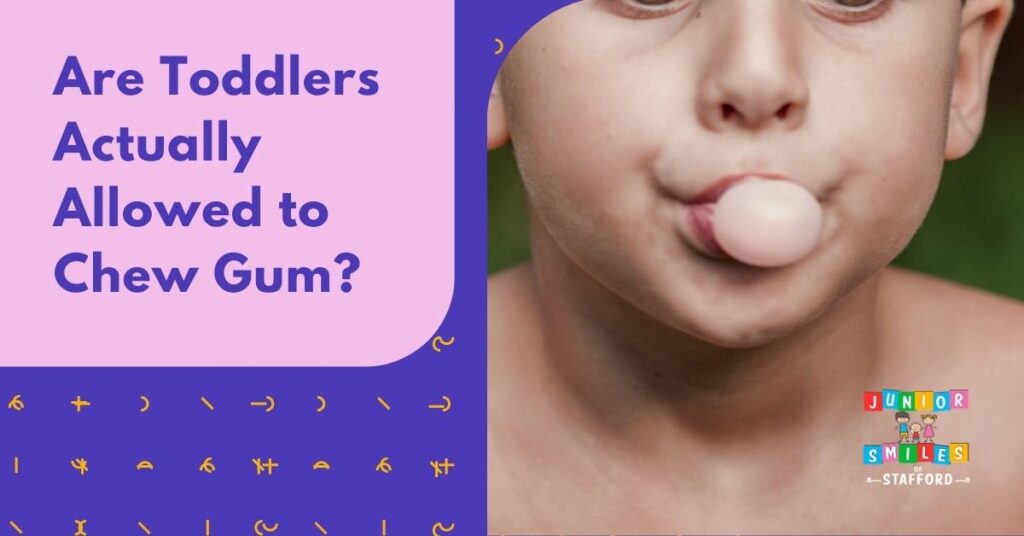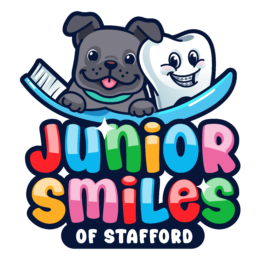Is it Okay for Kids to Chew Gum? Choosing the Right Gum for Kids

Many parents find themselves pondering, ‘Is it okay to chew gum?’ especially when it comes to their little ones. The American Academy of Pediatrics suggests waiting until children are mature enough to comprehend the importance of not swallowing gum. Generally, the suitable age to introduce chewing gum for kids is around five years old, a time when they are typically capable of grasping the concept of chewing without swallowing. It is also recommended to start with a half stick of gum to minimize the risk of toddlers swallowing it.
In this article, we’ll give an insight of what happens if a child swallows gum and offers guidance on choosing the right gum for kids, ensuring both enjoyment and safety in their gum-chewing experience.
How Chewing Gum Affects Kids’ Oral Health
Chewing sugar-free gum can be beneficial because it increases saliva production, which aids in the neutralization of acids and the removal of food particles, hence lowering the risk of dental decay. Sugary gums, on the other hand, raise concerns since they may contribute to cavities.
Excessive gum chewing can also cause jaw strain and alter appropriate tooth alignment. As a result, while chewing gum on a daily basis may seem like a harmless habit, selecting the correct sort of gum and controlling the frequency are critical for preserving your child’s dental health.
Benefits of Chewing Gum for Children
Chewing sugar-free gum can aid in oral hygiene. It stimulates saliva production, which is essential in neutralizing harmful acids and reducing the risk of cavities. Chewing gums that contain xylitol are also more ideal for your kids, as they help prevent tooth decay.
Additionally, some studies suggest that chewing gum everyday can improve concentration and memory, making it a potential aid in learning environments. It can also aid in eliminating motion sickness, which can be very helpful during long travels. However, it’s important to balance these benefits with caution and knowledge of what type of chewing gum your kid should have and how often they can have this little treat–which is ideally one or two pieces a day only.
Potential Problems With Gum Chewing
While chewing gums is not necessarily bad for your kid’s oral health, anything that is too much can still manifest negative effects. If your child excessively chews gum, they may experience several dental and health problems, such as abdominal pain, digestive tract issues, ulcer, jaw muscle pain, temporomandibular joint (TMJ) disorders, etc.
If your kid is still too young, giving them chewing gum may lead to potential choking. And in the case where they swallow it, the sweeteners in sugar-free gum can cause headaches, diarrhea, and nausea if swallowed in significant quantities. But the good news is that swallowing a gum is generally safe, so long as they won’t choke on it. Therefore, while chewing gum everyday might seem harmless, it’s crucial to monitor the amount and duration to prevent these potential problems.
Types of Gum Suitable for Kids
Not every gum is the same. When permitting your child to indulge in gum occasionally, it’s essential to choose a variety that’s gentle on their teeth. Below are some types of chewing gums suitable for your child:
Sugar-Free Gum
When selecting gum for kids, sugar-free options like Orbit Kids and Trident are ideal choices. These gums are sweetened with xylitol, which not only is safe for kids but also helps in preventing tooth decay. Research supports the safety of xylitol, making it a preferred sweetener in children’s gum. Sugar-free gums like Spry and Epic Dental, specifically formulated for kids, can maintain oral health without the sugar-induced cavity risks.
Natural and Organic Gums
Parents concerned about artificial additives in their children’s diet can turn to natural and organic gums. Brands like Glee Gum and PUR offer gums made from natural chicle and free from artificial sweeteners and colors. These gums, flavored with natural fruit extracts, are not only healthier but also environmentally friendly. They offer a safe, chemical-free chewing experience, making them a smart choice for health-conscious parents.
Fruit-Flavored Gum
Fruit-flavored gums are a hit among kids, with flavors ranging from classic strawberry to exotic tropical fruits. Brands like Zollipops and Xylichew offer a range of sugar-free, fruit-flavored options that are both delicious and safe for children’s dental health. When choosing these gums, ensuring they are sugar-free and made with natural flavors is key to providing a fun yet healthy chewing experience. These gums offer the taste kids love without the harmful effects of sugar.
Dental Chewing Gums
Dental chewing gums like B-Fresh and Peppersmith are specially formulated to promote oral health. These gums often contain calcium and xylitol, aiding in plaque reduction and tooth enamel strengthening. For parents who wonder about the frequency of gum chewing, these dental gums are a beneficial choice when used in moderation. Suitable for older children, they aid in oral hygiene while providing the enjoyment of gum chewing.
Gum for Kids FAQs
What age should a toddler be allowed to chew gum?
A solid rule of thumb when it comes to allowing your child to chew gum is to wait until they’re at least five years old. Most kids have the cognitive and motor skills necessary to learn to chew gum properly by the time they reach this age. During this time, they also begin to get their permanent teeth, which is a good opportunity to encourage them to consume sugar-free gum for their oral health.
What should I do if my toddler swallowed gum?
Do not freak out if your toddler ingests gum. Even while it’s normal for parents to be worried, it usually isn’t dangerous. The gum probably won’t cause any problems when it goes through their digestive tract. But ensure to be on the lookout for symptoms like constipation or abdominal pain that could indicate choking or an obstruction in the intestines. Immediately seek the advice of a pediatrician if you observe any concerning symptoms or if the youngster swallows a significant amount of gum.
How long should you chew gum?
There is no universally correct amount of time to chew gum; it is rather context dependent. To get the most out of gum’s saliva-stimulating and breath-freshening properties, it’s best to chew it at least 20 minutes after eating. But whether it’s merely a habit or something you enjoy doing, cutting back can help keep your jaw and teeth healthy. Moderation is crucial when it comes to chewing because excessive chewing for long periods of time can cause jaw pain and even problems with the temporomandibular joint (TMJ).
Is it bad to chew gum everyday?
Regular gum chewing, particularly sugar-free gum, is not always unhealthy. Actually, it has the potential to improve dental hygiene and decrease tooth decay. However, make sure to be careful to chew only when necessary. Excessive gum chewing can strain the muscles in your jaw and, in rare cases, give you a headache. As with most things, moderation is key; chewing gum once a day is OK if it doesn’t cause pain or cavities.
Is xylitol safe for kids?
As a sugar alternative, xylitol is present in many sugar-free gums and is often considered safe for youngsters to consume. It stimulates saliva production and aids in reducing tooth decay, thus it’s good for dental health. Having said that, moderation is key when it comes to consumption. Products containing xylitol should be kept out of the reach of pets since, although it is harmless for people, it is very poisonous to dogs.
Keep Your Child’s Teeth in Perfect Health with Junior Smiles!
Maintaining a healthy balance and making educated decisions are key when it comes to letting your kids chew gum and knowing which kind of gum to offer them. Although gum chewing can have some good effects, particularly with sugar-free types, it’s important to consider your child’s age, the sort of gum they like, and how often they should chew it to make sure it’s really enjoyable for them. Proper dental hygiene is an important component of a child’s general health, and behaviors like moderate gum chewing can contribute to that outcome. Keep in mind though that whenever you have questions or concerns regarding your child’s oral hygiene routine, it’s always best to seek the advice of dental experts and keep yourself updated.
If you’re looking for expert advice or have concerns about your child’s oral health, look no further than Junior Smiles of Stafford, VA. Renowned as a trusted dental clinic for kids, our team of experienced pediatric dentists is dedicated to providing the best dental care with a gentle, child-friendly approach. Whether it’s your child’s first dental visit or a routine check-up, we ensure a comfortable and positive experience.

